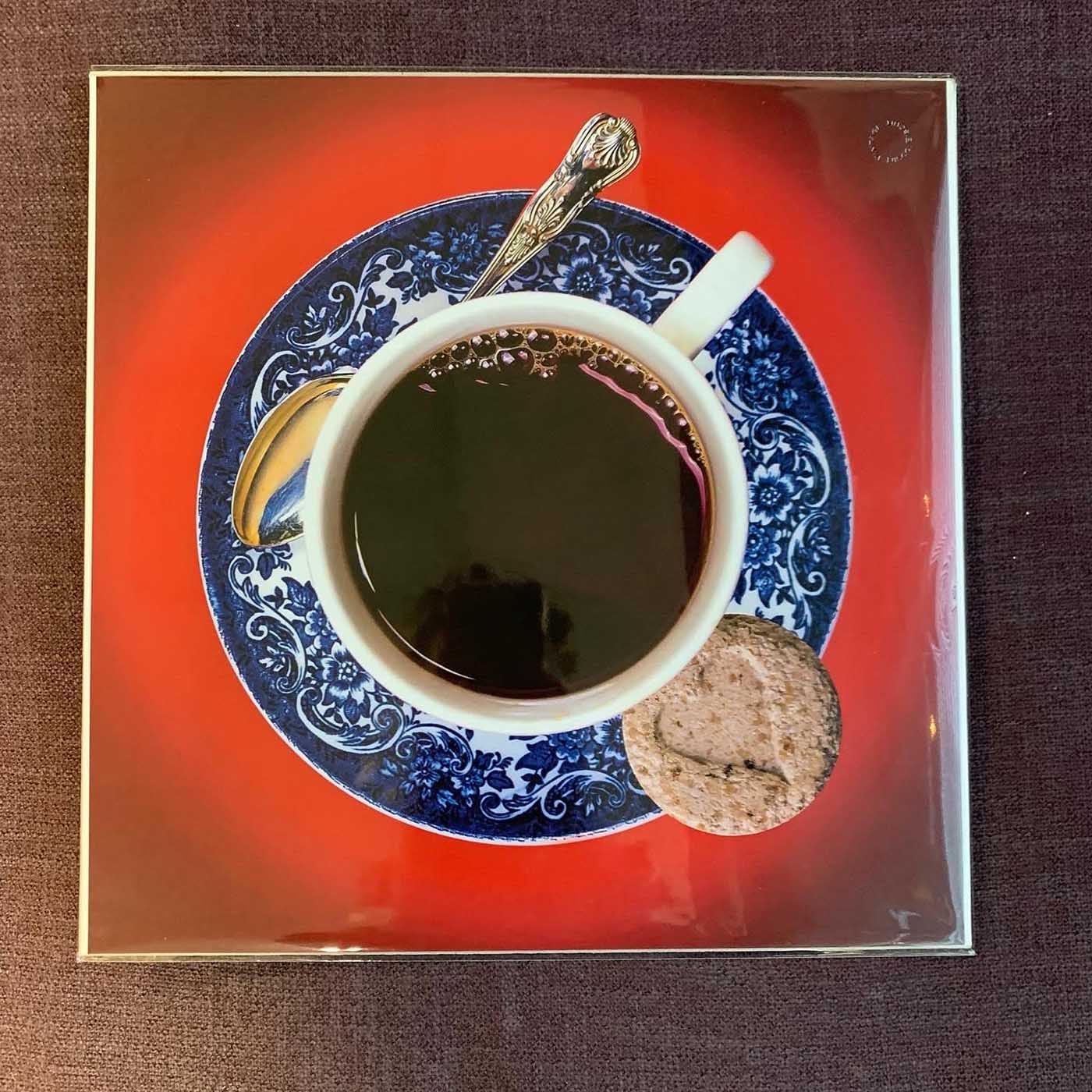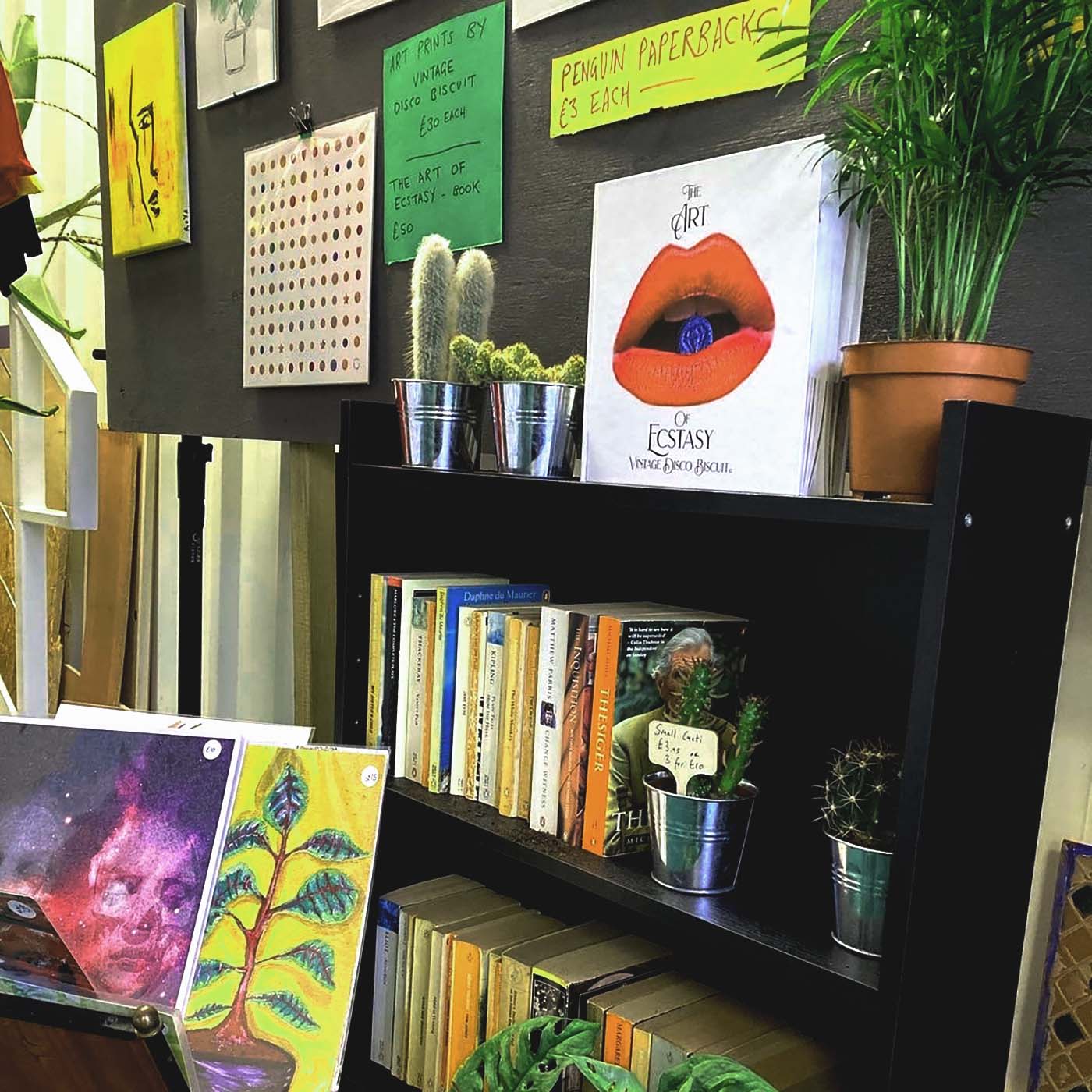I’ve been intending to write about Vintage Disco Biscuit‘s wonderful book for quite some time. I got a copy of The Art of Ecstasy at The Golden Lion in Todmorden (also quite wonderful) back in April, when I played a gig there with John Paynter and Matt Hum. We were on after a book signing event for this, where I met the Rupert Scriven (Vintage Disco Buscuit), and I and several friends acquired copies.
It was a memorable night for many reasons. In February, a friend had passed away in sudden and tragic circumstances, and it was the first time after his funeral that the group of us who had known him would all be meeting up. We had all partied together in the past, and live in different parts of the country, and until we lost our mate, I had not seen many of the group since pre-covid times. After the awful thing that had happened, it was cathartic to catch up with these friends and celebrate a birthday, dance, play music, listen to other DJs playing music, and wind our way through the adventure of the weekend. The Golden Lion is a magical place. My friends, who had not been there before, could not quite believe it.
I am digressing a little. But not as much as you may think. As well as the art, this book features anecdotes from many of the original rave generation about their experiences clubbing and partying. These are great to read. Some are heartwarming, some are funny, and the book features quite a few people who I know personally, which is a nice thing on a personal level. A lot of the contributors are DJs and promoters, some, like my friend Andrew Ashton, are not either, but are dedicated followers of their scene.
The book is a 300 page hardback art book. The anecdotes are accompanied by Vintage Disco Biscuit’s cheeky visual creations featuring his (now destroyed) vintage collection of disco biscuits. So, for example, we see a cup of tea with a disproportionately large E nestled in the saucer. You can buy prints of these amazing creations too.

I recall reading somewhere that Scriven chose to avoid editing the contributions, as he wanted them to retain their authenticity. I quite like this, although my only criticism of this most excellent creation is that a very minimal amount of editing wouldn’t have gone amiss, just to tidy up things like Mr C spelling Alexander Shulgin’s name in three different ways.
I met the author that day at The Golden Lion, and he’s a very sound bloke, who took the time to speak with me for longer than just ‘Glad you bought my book’. One of the lads I was with said the same. We kept in touch, and there are now copies of the book and some of his prints at our creative space and shop at The Imaginarium.

The book also features the words and opinions of experts such as Dr Ben Sessa and Professor David Nutt, and 5% of every sale goes to The Loop, who are a charity focused on educating drug users. They are the only orgainisation in Britain who conduct forensic drug testing at festivals and in clubs, thus enabling people to make informed decisions about what they are taking, and to identify potentially harmful substances.
As an artist myself, one thing I often find is that people will ascribe some kind of deep meaning to my work that goes far beyond anything I had ever intended when producing it. That, of course, is one of the beautiful things about art. For me, beyond any visual aspect of the images themselves, a huge part of the artistry here is the statement this book makes. Sometimes, as I walk through the city centre in Leeds on a Saturday night, I find myself bewildered to think that alcohol is legal and garys are not. And here we are, at the end of 2022, with a beautiful coffee table book about ecstasy culture, featuring some slick, tongue-in-cheek artwork, and a collection of fond tales about peoples’ clubbing experiences, a lot of them a generation older than me. Yet its very subject matter is deemed wholly unacceptable by the law – a situation that does not make usage safer. It’s a strange dichotomy.




